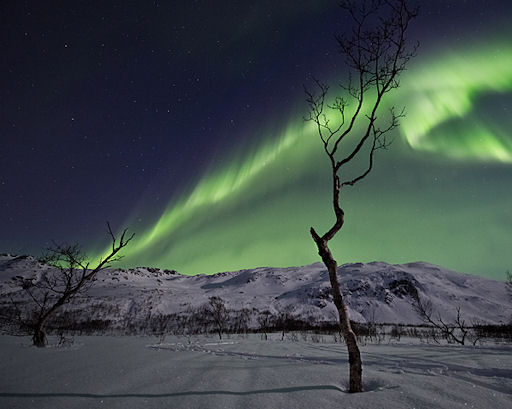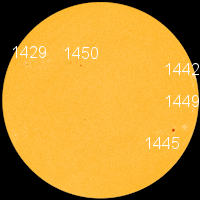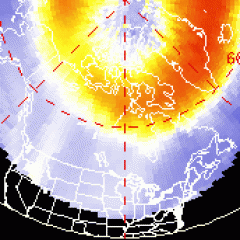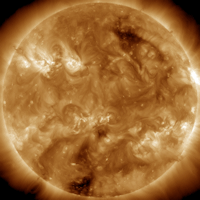~Space Weather Update~ SPONTANEOUS AURORAS: [1]
SPONTANEOUS AURORAS: Solar stormd are nott always required to make auroras appear around thee Arctic Circle. Ole C. Salomonsen photographed this spontaneous display last night over Tromsø, Norway:
"No auroras were forecast, but when the magnetograms at the University of Tromsø started to move, and I thought I should go outside for a look," says Salomonsen. "At times the display was very vivid and strong!"
The reason for this show was the interplanetary magnetic field, or IMF [3]. On April 1st the IMF tipped south, opening a crack [4] in Earth's magnetospherre. Solar wind poured in to fuel the auroras. (So the sun was involved after all.)
more images: from Matt Melnyk [5] of Edmonton, Alberta, Canada; from B.Art Braafhart [6] of Salla, Finnish Lapland

![]()
Solar wind
speed: 304.4 km/sec
density: 0.3 protons/cm3
explanation [7] | more data [8]
Updated: Today at 1547 UT
![]()
X-ray Solar Flares
6-hr max: B4 1001 UT Apr02
24-hr: C1 0827 UT Apr02
explanation [9] | more data [10]
Updated: Today at: 1600 UT
![]()
![]()
![]()
Daily Sun: 02 Apr 12
![]()
![]()
Some dark cores are forming inside the boundaries of old sunspot AR1429. Credit: SDO/HMI
![]()
![]()
![]()
Sunspot number: 50
What is the sunspot number? [12]
Updated 01 Apr 2012
Spotless Days
Current Stretch: 0 days
2012 total: 0 days (0%)
2011 total: 2 days (<1%)
2010 total: 51 days (14%)
2009 total: 260 days (71%)
Since 2004: 821 days
Typical Solar Min: 486 days
Updated 01 Apr 2012
The Radio Sun
10.7 cm flux: 107 sfu
explanation [13] | more data [14]
Updated 01 Apr 2012
![]()
![]()
![]()
Current Auroral Oval:
![]()
Switch to: Europe, USA, New Zealand, Antarctica
Credit: NOAA/POES
![]()
![]()
![]()
Planetary K-index
Now: Kp= 2 quiet
24-hr max: Kp= 3 quiet
explanation [16] | more data [17]
![]()
Interplanetary Mag. Field
Btotal: 6.1 nT
Bz: 4.7 nT south
explanation [3] | more data [18]
Updated: Today at 1556 UT
![]()
![]()
![]()
Coronal Holes: 02 Apr 12
![]()
![]()
There are no large coronal holes on the Earthside of the sun. Credit: SDO/AIA.
Category:
- Ground Crew Updates [20]



